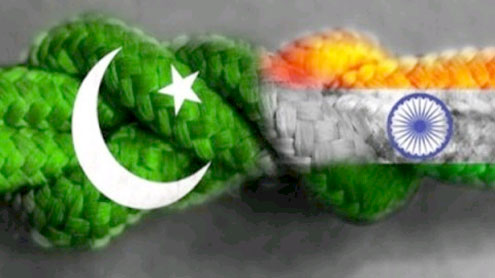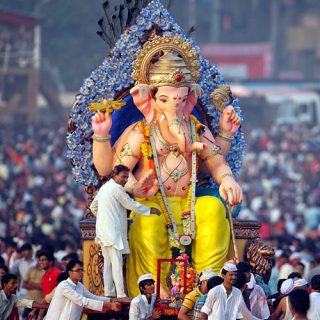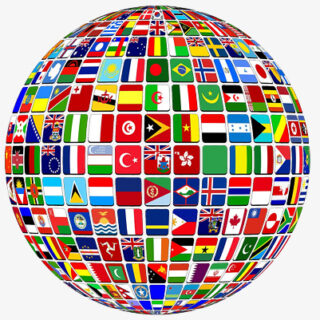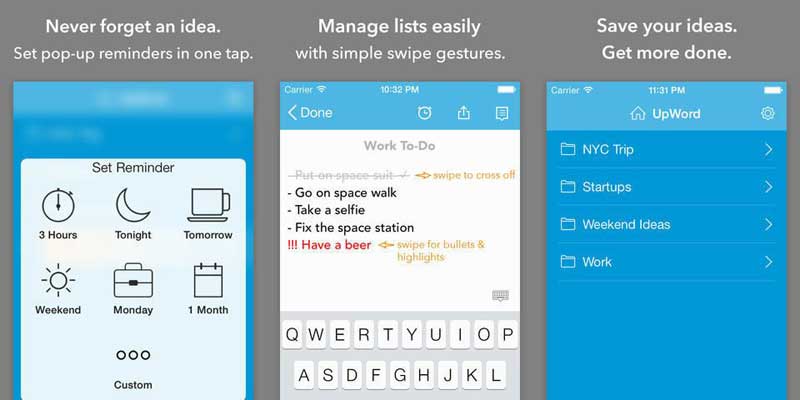Trade between India and Pakistan, one of the most significant confidence building measures (CBM), has been moving smoothly despite the recent cross-border firing in Jammu and Kashmir which have escalated tension and overshadowed the resumption of the dialogue process for normalisation of relations.
In fact, traders form both sides have been asking for upgradation of infrastructure to keep pace with expanding trade, especially through the Attari-Wagah land route. And with India mulling importing onion to increase domestic supply, traders in India are quite enthusiastic sensing another opportunity and have asked their counterparts in Pakistan to be ready with permission for exporting the commodity that their government does not allow.
Even cross-border trade along the Line of Control (LOC) in Jammu and Kashmir has not stopped, although running on a very low-key fashion.
And the Nawaz Sharif government has sought assistance from the Asian Development Bank (ADB) to set up a border management system to deal with increased trade and transit traffic through the Attari-Wagah border. Reports from Islamabad said the objective is to speed up processing of goods and people and cut down on waiting time.

Bilateral trade is conducted mostly through the Mumbai-Karachi sea route and Attari-Wagah land route. The Indian government has said the ceasefire violations in the past few months and killing of soldiers have not affected two-way trade.
“Both sides have made considerable progress in improving bilateral trade ties. Pakistan has moved from a Positive List regime to a Negative List regime, which substantially increases the tradable items with India. India has similarly liberalized its earlier restrictions on inward/outward investment flows to Pakistan. Both sides also agreed on a detailed roadmap for Preferential Trading Arrangements under the SAFTA (South Asia Free Trade Area) process,” Minister of State in the commerce ministry D. Purandeswari told parliament Wednesday.
The first India-Pakistan Joint Business Forum, which met in June in Islamabad, said the minister, “had very productive meeting with Pakistan prime minister for further improving bilateral trade ties.”
The trade dialogue with Pakistan was re-initiated with the fifth round of India-Pakistan commerce secretary level talks held in Islamabad in April 2011. This was followed by further rounds of talks in November in Delhi and September next year in Islamabad. Three ministerial-level dialogues were also held in September 2011, February 2012 and April 2012.
The first ever bilateral visit of Commerce Minister Anand Sharma to Pakistan took place in February 2012.
Total trade between India and Pakistan for last year stood at $2,351.09 million compared to $1,942.76 million in 2011. Millions in revenue are currently lost via smuggling and informal trade.
While India has already granted the Most Favoured Nation (MFN) status to Pakistan, Pakistan has been holding back on its decision to accord the same status to India, although several studies have estimated that large gains are available from removing barriers to trade.
The World Bank says that there are significant gains for India and Pakistan out of MFN trade. However, the welfare gains increase dramatically with the improvement in bilateral trade facilitation.
Pakistan’s exports to India would rise by a staggering 202 percent under the MFN plus enhancement of bilateral trade facilitation, says the Bank.
Infrastructure and logistics are a major hurdle to growth of bilateral trade between Pakistan and India. And poor logistics deter engagement in regional production sharing. These include an array of essential activities including transport, transit trade, warehousing, cargo consolidation, border clearance, distribution and payment systems.
Aftab Vohra, Lahore Chamber of Commerce and Industry convener on Indo-Pak trade, says that insufficient infrastructure and logistics is a kind of “non-tariff barrier” imposed by the two countries, which needs to be addressed for promoting two-way trade.
“Although the new integrated check post has been set up on the Indian side, it is already running at full capacity,” he told the News International. He added that the facility would not be able to handle increased trade volumes when the current permissible list of goods to be imported to Pakistan via the road route was expanded.
The land customs station is operational only 12 hours a day and loading and unloading of trucks is still manual. Moreover, there is lack of warehousing facilities on both sides and testing laboratories are not present at land ports.
The business community in both the countries feels that the border points will achieve significance once Pakistan allows India to transport goods to central Asia through Pakistan.
Prior to the border skirmishes, prime minister Sharif had made overtures to New Delhi to resume dialogue between the two countries.
“One of the lessons Sharif grasped during his decade-long exile is that if Pakistan’s civilian leaders want to keep the military at bay, then the paradigm that keeps the military in power — enmity with India — must be changed. His constituents voted in record numbers for governance over ideology, prosperity over animosity (with India),” wrote Mira Sethi in the Guardian in June.
And India was responding in a positive manner.
The two countries had agreed to resume talks on Sir Creek, a 96 km strip in the Rann of Kutch marshlands of Gujarat, and the Wullar Barrage built on river Jhelum in Kashmir.
Efforts were also being made for a meeting between Sharif and Manmohan Singh in New York on the sidelines of the United Nations General Assembly in the last week of September.
External Affairs Minister Salman Khurshid says the government will have to explore at what level dialogue between the two countries can be taken up as the situation along the LOC is not normal.
“We will have to see what steps are needed to normalise the situation and at what level the two countries can engage in dialogue,” Khurshid said Friday.
Analysts say even if the two prime ministers meet, much movement should not be expected until a new government has been formed in India. Also, Pakistan prime minister’s choice of the country’s next army chief later this year would be crucial for normalising relations.
Till then, trade will flow quietly, hopefully.
-IANS





